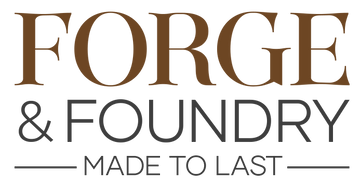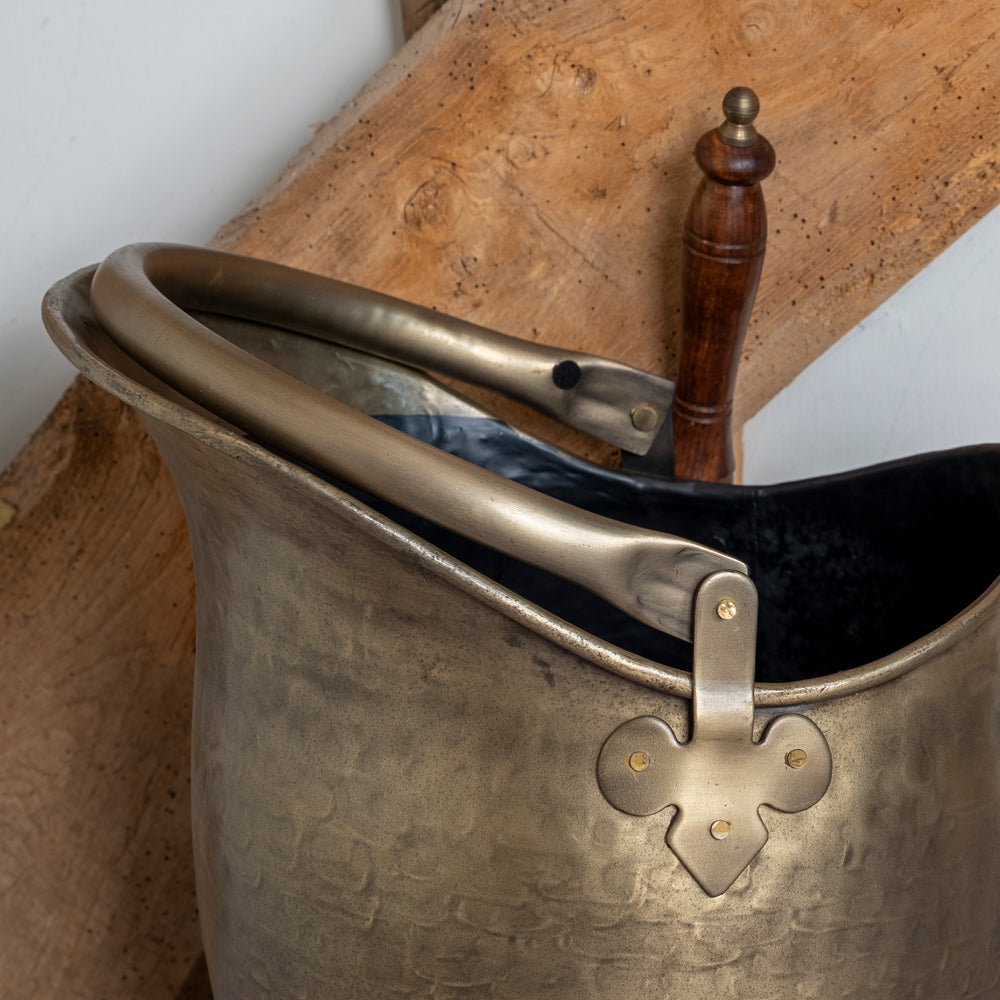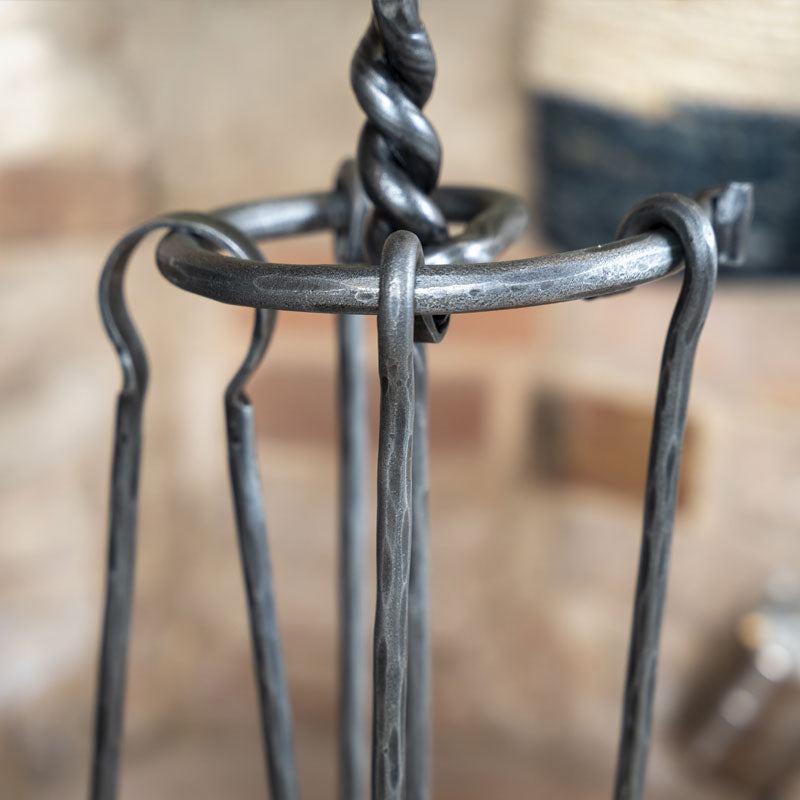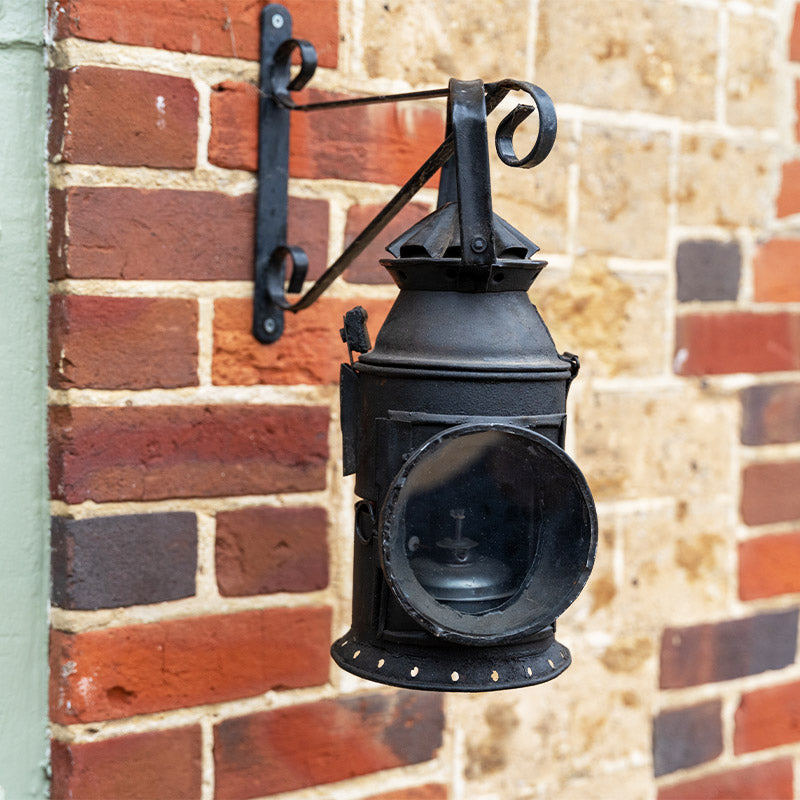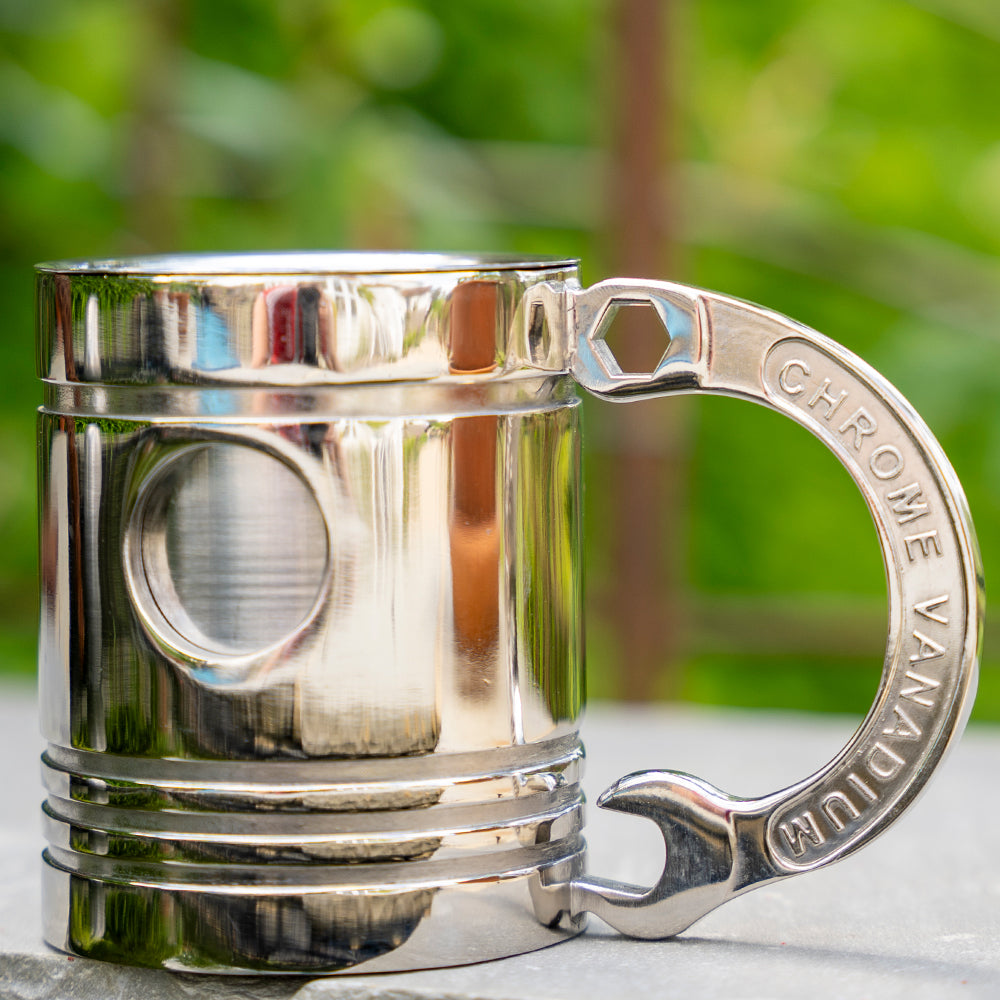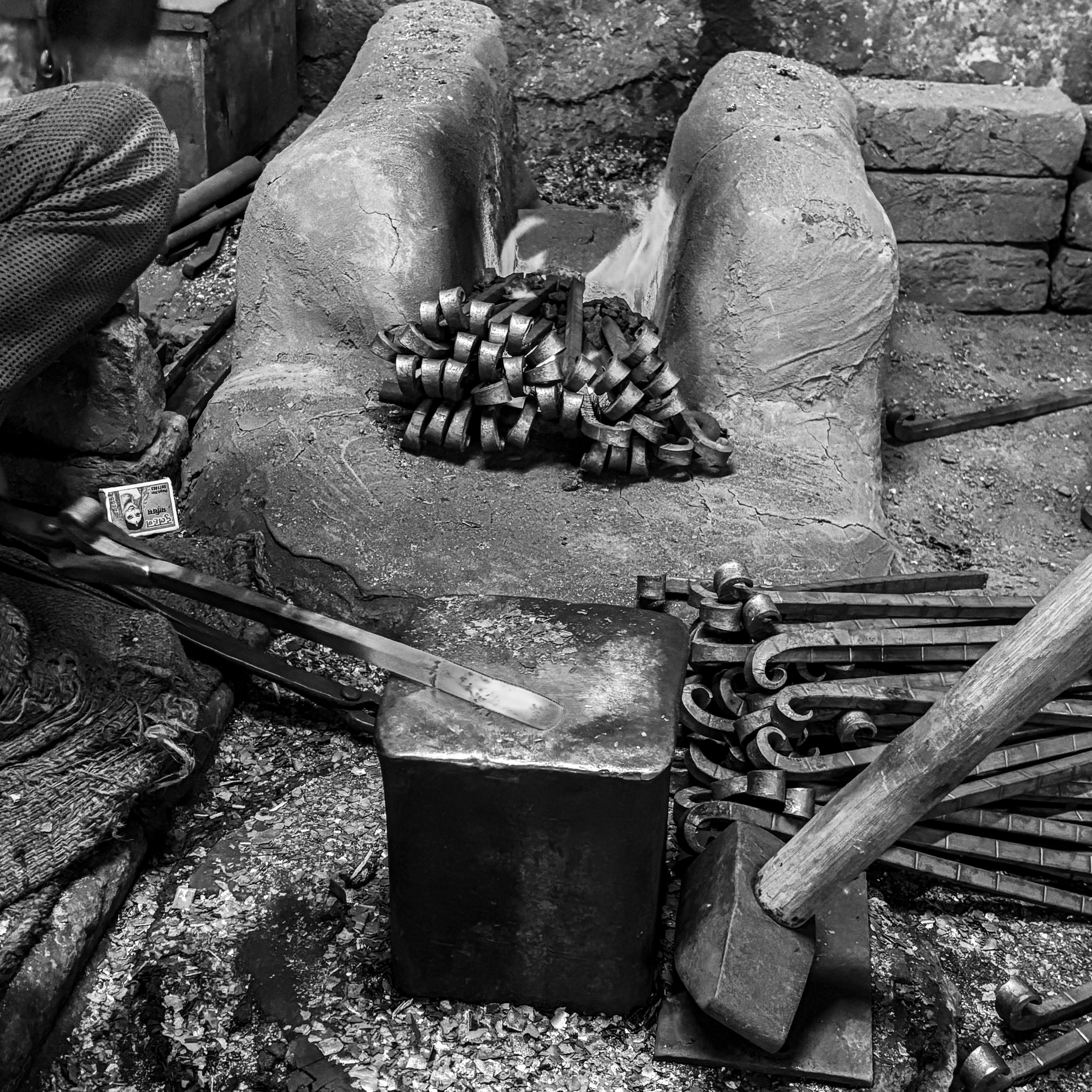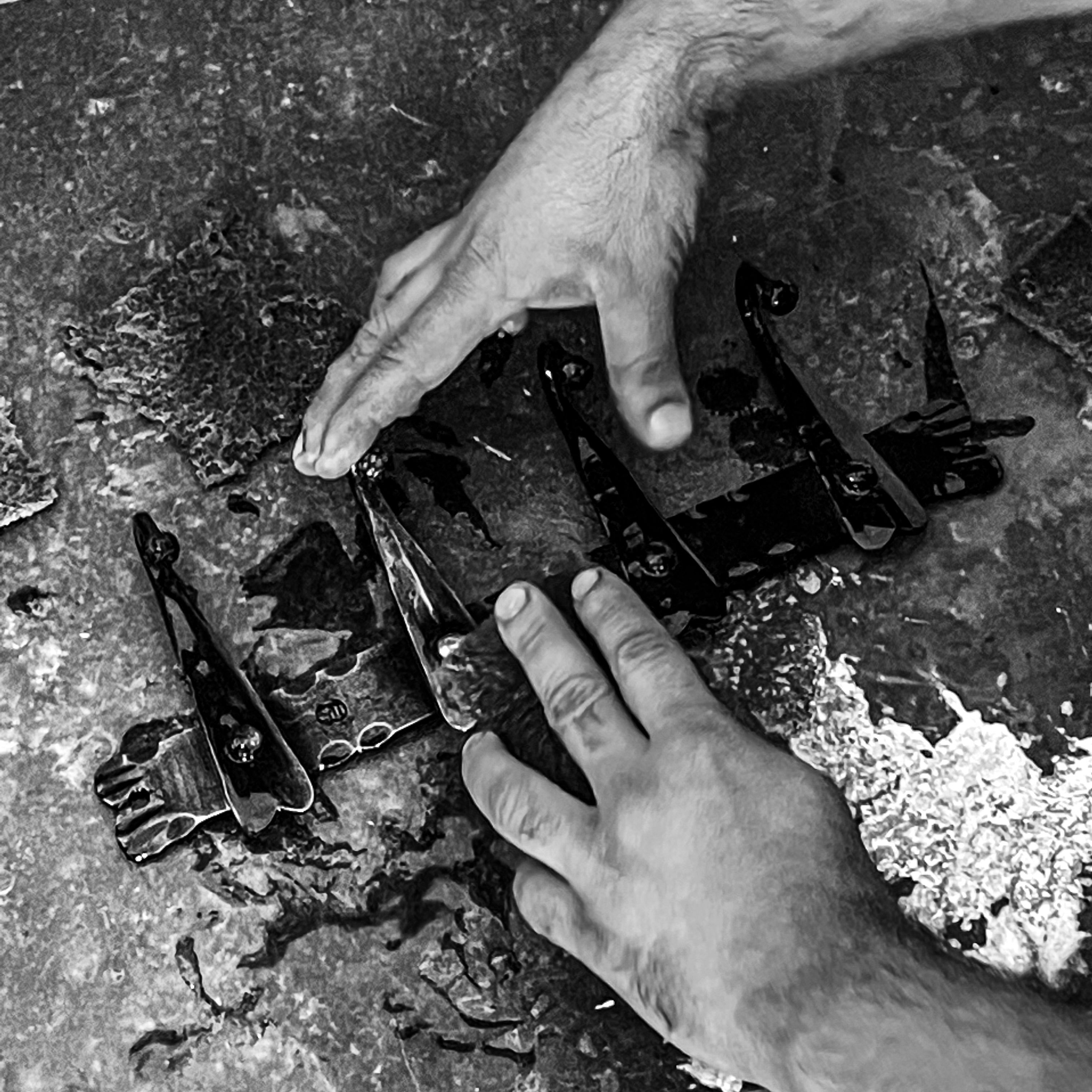How Each Hand Forged Item Is Crafted
Heating
The first and most critical step is heating the metal, usually steel or iron, in a forge.
- The metal is placed in the fire and heated to its forging temperature. This is where the metal becomes highly malleable and can be easily shaped without cracking.
- The blacksmith carefully monitors the heat, often using the colour of the metal as a guide to ensure it is hot enough to work but not so hot that it begins to burn or melt. The correct temperature is crucial for ease of shaping and to maintain the metal's strength and structure.
Shaping
Once the metal reaches the correct temperature, it's removed from the forge using tongs and quickly taken to the anvil for shaping.
- This is the core of the forging process, where the metal is hammered and manipulated into the desired form using tools like hand hammers, sledges, and specialised forging tools.
- The blacksmith uses different techniques—such as drawing out (making the metal longer and thinner), upsetting (making it shorter and thicker), bending, or punching—to gradually change the metal's cross-section and shape.
- As the metal cools and becomes harder to work, it must be returned to the forge for re-heating before more shaping can be done. This cycle of heating and hammering is repeated until the final form is achieved.
Finishing
After the final shape is achieved and the metal has cooled, the process moves to finishing to prepare the product.
- This stage involves operations like trimming away any excess material, grinding to smooth out hammer marks, filing sharp edges, and often applying a final polish.
- The metal may also undergo heat treatment processes, such as hardening (quench-cooling) and tempering (re-heating to a lower temperature), which are done to improve the metal's mechanical properties, like its strength and toughness.
- The final steps often involve applying a protective or decorative coating, such as oil, wax, or paint, before the hand-forged product is complete.
